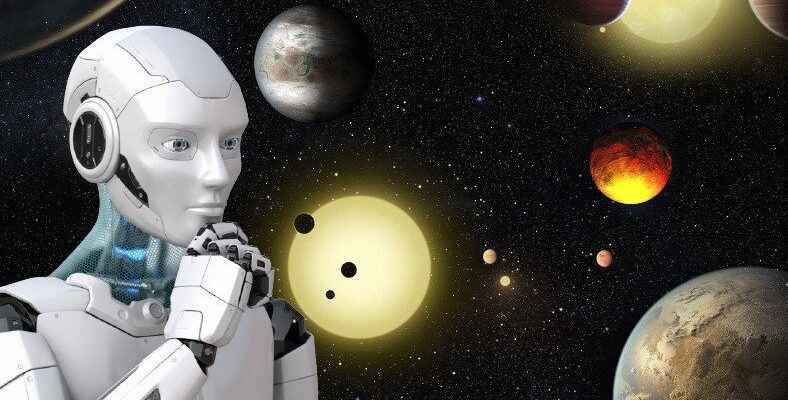On the question of whether there is a planet suitable for extraterrestrial life in space, scientists continue their studies without slowing down; however, this time it was a man-made artificial intelligence, not a human, who made the discovery. Analyzing the data of the Kepler Space Telescope, artificial intelligence detected more than 300 exoplanets.
NASA’s first private exoplanet-finding ‘hunter’ Kepler Space Telescope, while in use, has observed hundreds of thousands of stars in search of potentially habitable worlds outside our solar system. The list compiled by the telescope during these observations continues to shed light on new discoveries, even though the telescope has been out of use for years.
Scanning this data, which experts have been examining for years, faster and more efficiently. ExoMiner A new artificial intelligence algorithm named Kepler examines the previously compiled data and finds the unknown. more than 300 discovered a new exoplanet.
None of the exoplanets found have suitable conditions for life
The telescope, which stopped working in November 2018, was looking at temporary reductions in stellar brightness that could be caused by a planet passing in front of the stellar disk. However, since there is no rule that all these reductions in brightness will be due to exoplanets, NASA’s scientists had to resort to more detailed procedures to distinguish the false from the truth. Of the total known exoplanets, 3,000 have been confirmed so far. 4,539 That’s a pretty big ratio when we consider that the planets are large – considering that Kepler, which has detected thousands of planet candidates, has also collected a lot of data during its 10 years of service. when enough data is provided It can be said that ExoMiner, an artificial intelligence that can learn and improve its abilities, is a job.
What scientists have to do is examine the Kepler data for each candidate exoplanet; was to look at the light curve and calculate how much of the planet occupies the star, and analyze how long it takes for the so-called planet to cross the star’s disk. In some cases, the observed brightness changes were unlikely to be explained by an orbiting exoplanet. exactly the same process more efficient The ExoMiner algorithm, which followed in a way, also added 301 exoplanets to the Kepler planet catalog. Unfortunately, none of these new confirmed planets are inhabited. does not have favorable conditions.
RELATED NEWS
Those Aliens Will Coming Here: Astrophysicists Are Working On A New Telescope Project For The Discovery Of Extraterrestrial Life
ExoMiner project leader and machine learning manager at the Universities Space Research Association from NASA Ames Research Center Hamed Valizadegan“When ExoMiner says something is a planet, you can be sure it’s a planet,” He noted that the algorithm is extremely accurate and more reliable than other machine classifiers and humans. Proving its skills, scientists now have the ExoMiner available to NASA. Transit Exoplanet Survey Satellite (TESS) or the European Space Agency. Planetary Transits and Ocillations of Stars It wants to use data from upcoming exoplanet search missions like (PLATO) to help scan it.
Source :
https://www.space.com/artificial-intelligence-300-exoplanets-in-kepler-data
